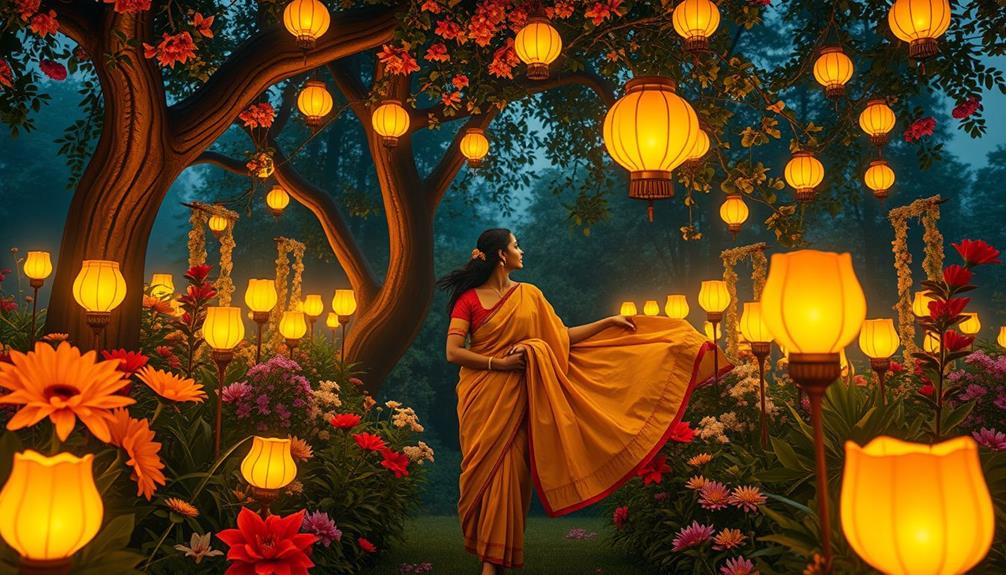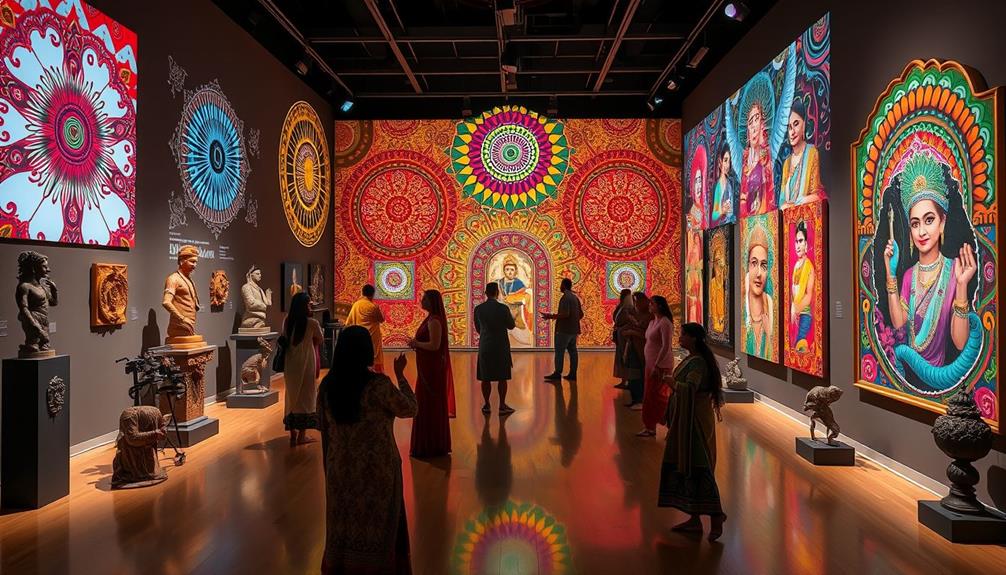Women in Rabindranath Tagore's oeuvre are more than muses; they're essential forces that shape his creative journey. Figures like Kadambari Devi and Mrinalini Devi profoundly influenced his emotional landscape, infusing themes of sorrow and memory into his works. Tagore's female characters often challenge societal norms, reflecting empowerment and complex emotional lives. His exploration of women's roles showcases a blend of traditional expectations and the desire for independence, resonating with modern feminist ideals. Each brushstroke and line gives voice to the unseen depths of womanhood, inviting you to explore these intricate dynamics further.
Key Takeaways
- Women in Tagore's life, like Kadambari Devi, profoundly influenced his emotional themes and artistic expression, shaping his poetry and paintings.
- Tagore's exploration of sorrow and memory, often linked to lost relationships, emphasizes the emotional depth women brought to his works.
- His artistic techniques evolved significantly later in life, blending natural elements with expressive forms, reflecting women's complex emotional landscapes.
- Female characters in Tagore's literature challenge societal norms, showcasing empowerment and nuanced portrayal of women's struggles and aspirations.
- Tagore's philosophy positions education as essential for women's empowerment, advocating for their roles as vital contributors to society.
Influence of Women in Tagore's Life
In exploring the influence of women in Rabindranath Tagore's life, you'll find that they weren't just figures in his personal narrative but powerful muses shaping his artistic vision. Kadambari Devi, in particular, played a crucial role in his creative journey, and her emotional complexity can be likened to the depth explored in speech therapy for kids. Her presence inspired many of his poems, as she embodied the complexities of love and loss. The emotional depth he explored in his work often reflected his bond with her.
After Kadambari's tragic suicide in 1884, Tagore faced a profound transformation. This event not only marked a turning point in his emotional life but also influenced the themes he later explored in his poetry. Kadambari's impact remained evident, lingering in his reflections on love, sorrow, and memory.
Mrinalini Devi, his wife, further enriched Tagore's emotional landscape. Her death in 1902 deeply affected him, adding layers to his artistic expression.
Even during his travels, women like Victoria Ocampo inspired him, fostering an international appreciation for his work. Tagore's letters reveal that his emotional connections with women were central to his creativity, highlighting their essential roles as muses and influences in his life.
Themes of Sorrow and Memory

When you explore Tagore's works, you can't help but notice the emotional depth he captures through themes of sorrow and memory.
His art and poetry reflect how memories of lost love and relationships shape his creativity, revealing a raw vulnerability.
This intricate interplay between grief and remembrance not only defines his artistic expression but also enriches your understanding of women as pivotal figures in his life.
Additionally, the influence of astrology and attractiveness may add another layer to how these themes resonate with readers, as personal connections and perceptions can be shaped by cosmic alignments.
Emotional Depth in Art
Emotional depth in art often reveals itself through the intricate interplay of sorrow and memory, a theme that profoundly permeates Rabindranath Tagore's oeuvre. Tagore felt this deeply, as his emotional landscape was shaped by the women in his life, particularly Kadambari Devi. Her haunting presence is evident in his works, like "Portrait of a Woman," where sorrow intertwines with memory.
The themes of love, loss, and grief resonate strongly in pieces such as "First Sorrow," reflecting the profound impact of Kadambari's suicide in 1884. This emotional turmoil can be likened to the experiences of BPD-coded characters, who often navigate intense feelings of love and loss, highlighting the complexities of human relationships exploration of BPD in media.
In his artistic expressions, Tagore employed dark colors and sad expressions, evoking a sense of mourning that showcases his introspective nature. His exploration of women's emotions stands out in works like "Veiled Woman" and "Tableau of Shrouded Women," where the portrayals convey mysterious allure while hinting at deeper themes of sorrow and hidden feelings.
Initiating his artistic journey at age 63, Tagore found a powerful medium for expressing his emotional depth. Through visual art, he bridged the themes of sorrow and memory with the feminine experience, creating a lasting impact that resonates with audiences today.
Memory's Influence on Creativity
Haunting memories often fuel creativity, and in Rabindranath Tagore's work, this influence is strikingly evident. The profound impact of loss resonates deeply in his emotional landscape, particularly with the memory of Kadambari Devi, whose tragic suicide in 1884 left an indelible mark on his themes of sorrow and memory.
This emotional landscape mirrors the complexities seen in narcissistic relationships, where the interplay of personal experiences and emotional turmoil can considerably shape artistic expression. In the poem "First Sorrow," you can feel Tagore's exploration of grief and the haunting echoes of lost love, where melancholic tones capture the essence of his pain.
Tagore's paintings, like "Portrait of a Woman," employ dark colors and sad expressions to evoke mourning, further emphasizing the complex relationship between memory and loss. His artistic techniques, including dense crosshatching and subdued hues, enhance the emotional depth, inviting you to engage with his poignant themes.
Through the interplay of memory and creativity, Tagore vividly depicts women, weaving personal experiences into a rich tapestry of emotional narratives.
In your exploration of Tagore's oeuvre, you'll find that memory serves not just as a backdrop but as a catalyst for creativity, transforming sorrow into profound artistic expression.
Artistic Techniques and Styles
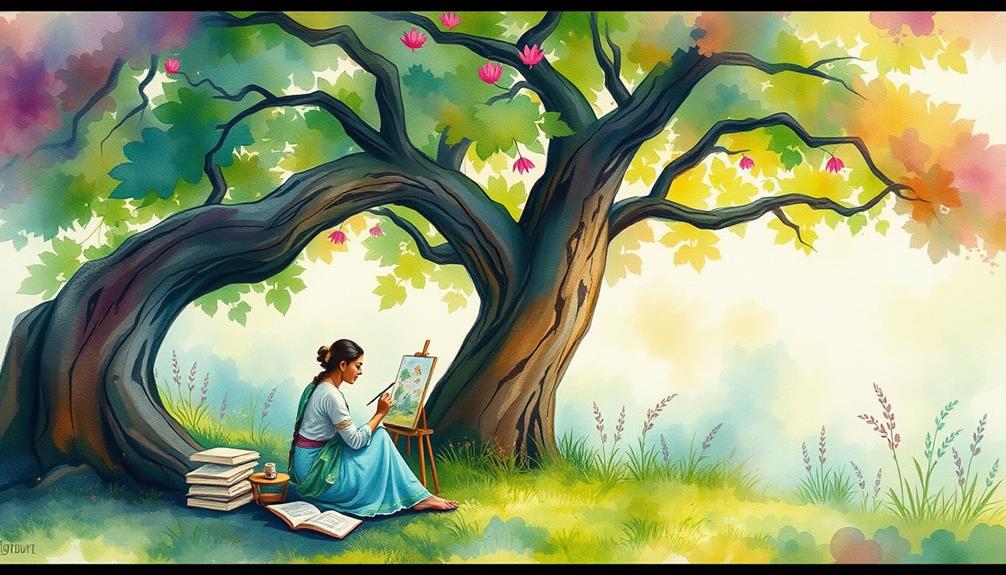
In exploring Tagore's artistic techniques and styles, you'll find a remarkable evolution that reflects his deep emotional insights. Starting his painting journey at the age of 63, he shifted from literature to visual art without formal training. This leap allowed him to express profound emotional themes through his art, similar to how essential oils can enhance mood.
Initially, his works featured simple sketches, but he quickly advanced to complex compositions that often depicted veiled women—symbols of loss and hidden emotions.
Tagore employed dense crosshatching techniques and a subdued color palette, primarily using browns and greys, to enhance the emotional depth of his paintings. His travels to China and Japan in 1924 introduced him to brush and wash techniques, which greatly influenced his artistic development.
This experience contributed to his unique style, blending natural elements with dynamic forms that reflect his connection to landscapes and the inner rhythms of life.
Female Characters in Tagore's Works
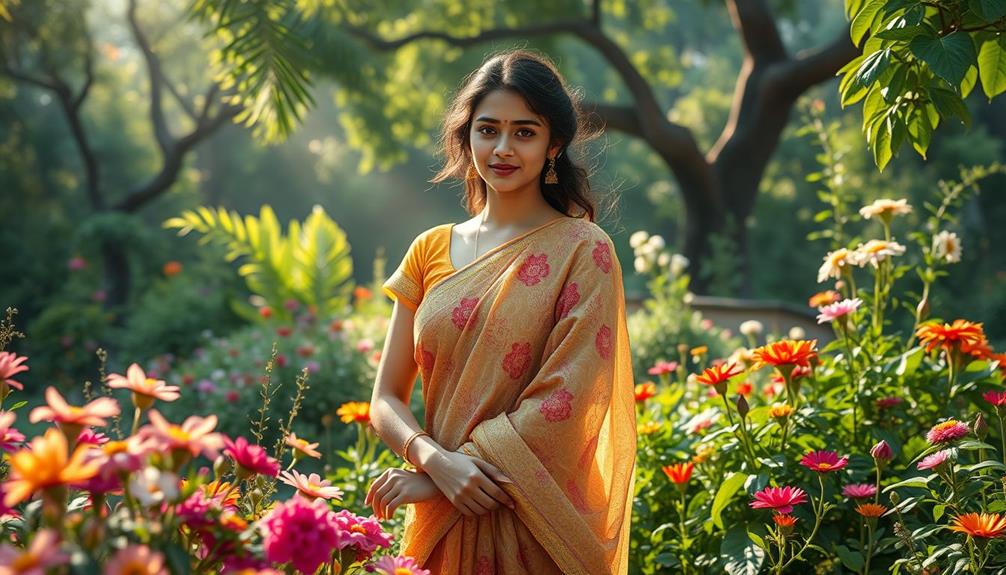
Tagore's artistic journey naturally extended into his literary works, where female characters take center stage and challenge societal expectations of their time. In novels like "Ghaire Baire," Bimala embodies complex emotional landscapes, maneuvering her desires against societal constraints. Similarly, Kamala from "Naukadubi" confronts the norms of her world, illustrating Tagore's nuanced approach to female characters in Tagore's works. His exploration of astrology and attractiveness resonates with the way these characters are perceived within their societal contexts, enhancing their allure and depth.
Tagore also highlights independence and emotional depth through characters like Rajan, the orphan girl from "The Post Master," whose struggles reflect a broader commentary on womanhood. The character of Chitrangada, a Manipuri princess, further represents Tagore's exploration of femininity and empowerment, as she defies traditional narratives and seeks her own identity.
These female characters often grapple with the tension between private and public life, showcasing their pursuit of autonomy within a patriarchal society. By blurring the lines between fiction and visual art, Tagore's paintings frequently feature these characters, reinforcing his thematic focus on women's experiences.
Through his diverse portrayals, you can see how Tagore not only celebrates women but also critiques the limitations imposed on them, making his literary contributions profoundly significant.
Legacy of Women Artists
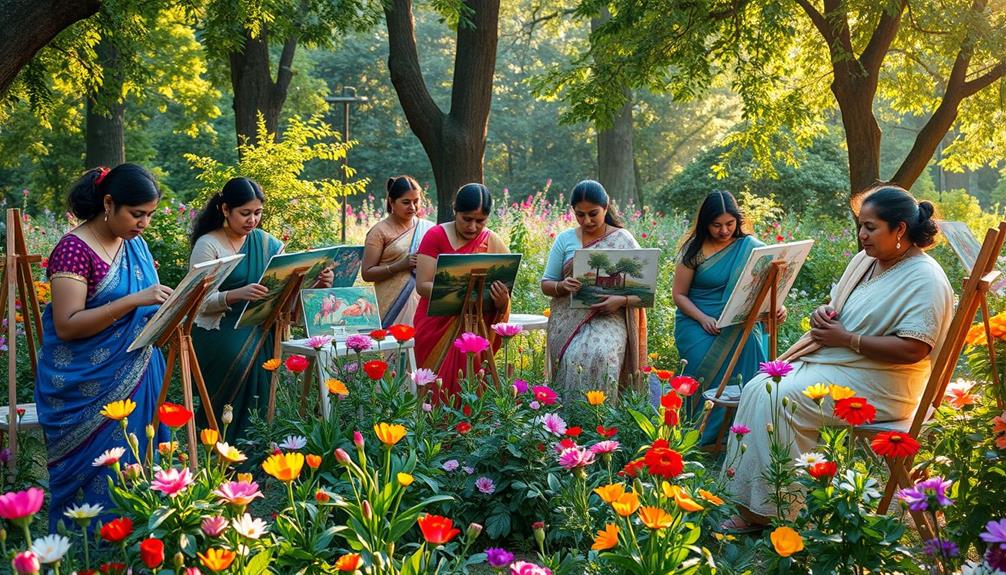
You can't overlook the historical marginalization of women artists, who often faced barriers that silenced their voices despite their immense talent.
Many women throughout history have turned to natural remedies and herbal practices as a form of expression, paralleling their artistic endeavors with holistic health approaches, such as those found in learning resources for herbalism.
Celebrating their contributions is essential for reshaping art history and recognizing the depth of their influence.
Historical Marginalization of Women
Throughout history, countless women artists have faced systemic barriers that have marginalized their contributions to the art world. Despite their mastery, many have remained in the shadows of their male counterparts due to societal norms and sexism. For instance, Sunayani Devi, born into the Tagore family in 1875, created vibrant works that are seldom acknowledged. Similarly, Anna Alma-Tadema, a British artist from 1867, specialized in portraits but struggled for recognition due to institutional sexism.
Here's a snapshot of some notable women artists who illustrate this historical marginalization of women:
| Artist | Contribution |
|---|---|
| Sunayani Devi | Self-taught artist, vibrant painter |
| Anna Alma-Tadema | Portrait specialist, faced rejection |
| Elizabeth Lee Miller | Photographer, documented WWII events |
| Georgia O'Keeffe | Pioneer of modern art, often overlooked |
| Frida Kahlo | Iconic painter, overshadowed by fame |
The ongoing movement for equitable representation emphasizes the importance of recognizing these underappreciated artists. Their contributions are essential to reshaping art history narratives and ensuring that women's voices are finally heard.
Celebrating Female Artistic Contributions
Recognizing the historical marginalization of women in the arts opens the door to celebrating their significant contributions and legacies. Despite their mastery, many women artists like Sunayani Devi have been overlooked, often relegated to obscurity. Born into the Tagore family in 1875, Sunayani was a self-taught artist whose vibrant works deserve more recognition within her family's artistic legacy.
The importance of storytelling in art can echo the powerful narratives shaped by influential figures in society, showcasing how creativity fuels innovation and problem-solving a fundamental aspect of innovation.
Similarly, artists like Anna Alma-Tadema faced rejection from institutions like the National Gallery, despite their exceptional skills. Elizabeth Lee Miller, an American photographer and journalist, documented essential events during WWII, yet her achievements often took a backseat to her relationships with male counterparts. These examples illustrate the systemic barriers women have navigated in the art world.
Today, the movement towards equitable representation is gaining momentum. It's imperative to acknowledge the contributions of underappreciated female artists, not only to honor their legacies but also to inspire future generations.
Tagore's Philosophy on Women

In Tagore's vision, women embody a spiritual essence that's vital to life's journey, serving as essential partners rather than mere subjects of inspiration. He emphasizes the emotional depth and complexity of women, recognizing their unique contributions to society.
Tagore championed women's education as a pathway to empowerment, understanding that knowledge has the transformative power to challenge societal barriers. He believed that an educated woman could redefine her role, asserting her independence and participating actively in the world around her.
Through his literary works, such as "Gitanjali" and "The Home and the World," Tagore highlights women's agency, using female characters to explore their inner lives and confront societal expectations. While some critics argue that he idealized women, his portrayal serves to inspire and elevate their status in society.
His philosophy encourages a deeper understanding of women's roles, advocating for their emotional and intellectual growth. Tagore's influence resonates today, inspiring modern feminist movements that promote gender equality and education initiatives in India.
The Concept of the New Woman
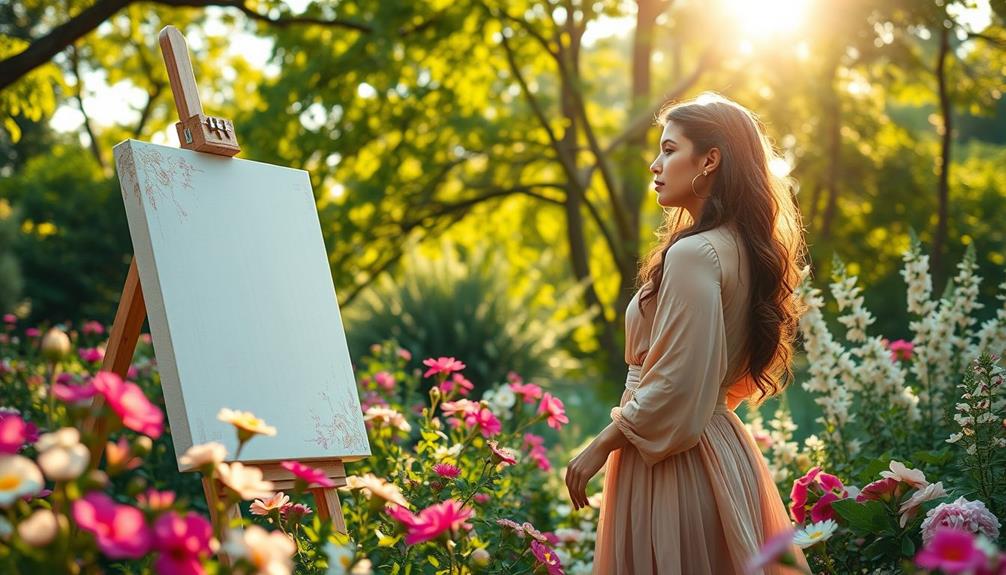
The concept of the "New Woman" emerged as a powerful symbol of change during the late 19th and early 20th centuries, reflecting a growing desire among women for independence, education, and self-assertion. Tagore wrote extensively about this shift, illustrating the evolving roles of women in society. His characters often embody the ideals of the New Woman, showcasing their struggles for identity and recognition within a patriarchal context.
This movement also paralleled a broader understanding of health and well-being, as a holistic lifestyle began to gain importance, emphasizing both physical and emotional health.
In his literature, Tagore emphasizes women's agency and contributions beyond traditional domestic spheres. He believed that educated women could greatly uplift society and challenge outdated norms. His portrayal of women reveals their emotional depth and complexity, highlighting their pursuit of love, freedom, and individuality amid societal constraints.
Through the lens of the New Woman, Tagore explores the personal ambitions of women, allowing them to navigate their desires while confronting societal expectations. By doing so, he advocates for women's education as an essential means of empowerment, ensuring they've the tools to carve their own paths.
In Tagore's works, you can see how the New Woman concept resonates, advocating for a progressive vision of gender roles.
Education and Women's Empowerment
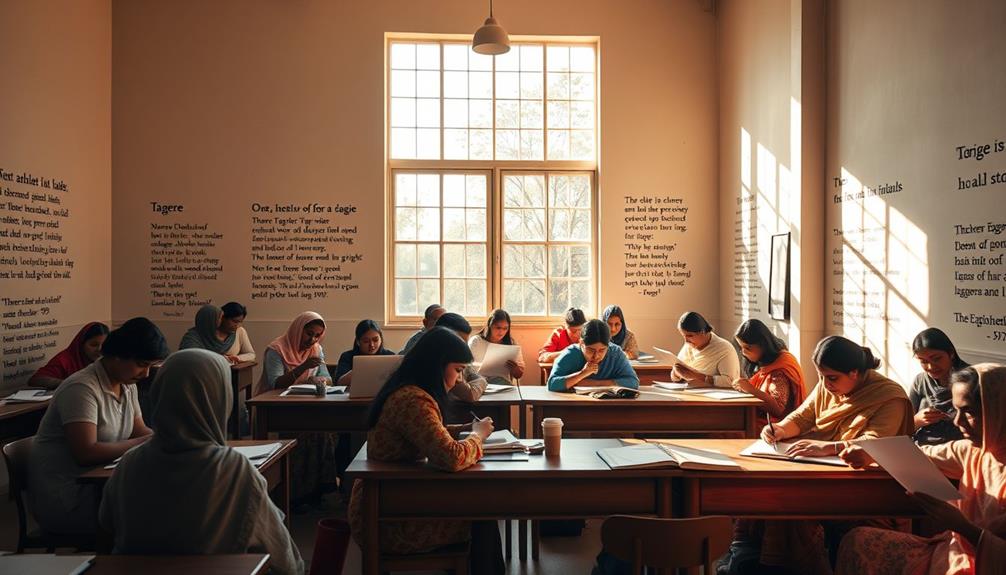
Education serves as a cornerstone for women's empowerment, and Rabindranath Tagore knew this well. He believed that access to education was essential for women to thrive, shaping them into key contributors to society. Tagore's progressive upbringing and exposure to Western feminist movements fueled his advocacy for women's rights, promoting the transformative power of knowledge.
In his literary works, Tagore consistently highlighted women's agency, challenging traditional norms and positioning them as essential partners in life. Let's break down the impact of education on women's empowerment according to Tagore's philosophy:
| Aspect of Education | Impact on Women |
|---|---|
| Access to Knowledge | Enhances decision-making |
| Critical Thinking Skills | Fosters independence |
| Social Awareness | Encourages community engagement |
| Personal Growth | Promotes self-confidence |
Through education, Tagore saw women not just as passive recipients of knowledge but as active participants in crafting a progressive society. By uplifting their voices and individuality, he championed a vision where educated women could redefine their roles in a patriarchal world.
Modern Critiques and Relevance
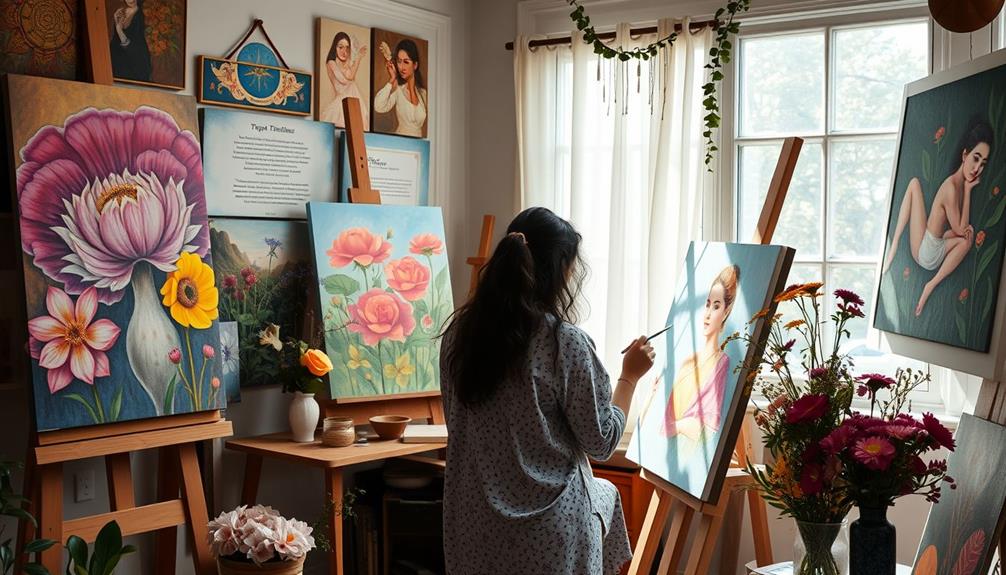
Throughout the years, Tagore's portrayal of women has sparked both admiration and critique, revealing a complex landscape of gender dynamics. Critics often highlight the idealization in his works, questioning how effective his feminist stance really is today. While his literary representations reflect the contradictions of his personal beliefs, they also underscore the intricate gender roles of his era. This complexity invites modern critiques that seek to reconcile his contributions with contemporary feminist ideals.
Additionally, the exploration of team-based games in social settings mirrors the collaborative themes found in Tagore's narratives, emphasizing the importance of shared experiences in understanding gender dynamics. The Tagore family's influence on Tagore's views is significant; their progressive approach to education and empowerment shaped his understanding of women's agency.
In works like "The Home and the World," he explores evolving gender norms, making his narratives relevant in today's conversations about women's rights. Despite critiques of his perspective on femininity, Tagore's legacy continues to inspire feminist movements in India, prompting necessary dialogues about empowerment.
Ongoing analyses of his contributions emphasize the importance of equitable representation of women in literature and art. They advocate for recognition of under-appreciated female artists, ensuring that their narratives are included in the broader discourse of gender equality. Tagore's work remains a touchstone for these discussions, bridging past and present.
Frequently Asked Questions
Who Was the Muse of Rabindranath Tagore?
Rabindranath Tagore's primary muse was Kadambari Devi. Their deep emotional bond markedly shaped his poetry, with her inspiration evident in his verses. Tragically, her untimely death profoundly impacted Tagore's artistic expression and themes.
What Do You Know About Rabindranath Tagore as a Artist?
Rabindranath Tagore's artistic journey began at 63, producing over two thousand works until 80. His paintings blend traditional Indian styles with European influences, showcasing emotional depth and evoking responses through animated forms and mysterious imagery.
Who Was the Lady With Tagore?
The lady with Tagore often refers to Kadambari Devi, his early muse, who greatly influenced his poetry. Their bond was profound, marked by emotional depth, until her tragic death altered his creative path greatly.
Who Is the Emancipated Women in Rabindranath Tagore's Selected Short Stories?
In Tagore's selected short stories, you'll find emancipated women like Bimala and Charulata. They challenge societal norms, seek personal freedom, and navigate complex emotions, embodying the struggle for self-fulfillment and empowerment in a patriarchal society.
Conclusion
In Tagore's vibrant tapestry, women emerge as both muses and creators, weaving threads of sorrow, strength, and beauty. Their voices echo through his verses, painting a world where the new woman rises like dawn, illuminating paths of empowerment. As you explore his work, let the delicate dance of his female characters inspire you, reminding you that their legacy pulses with relevance today, a timeless melody that calls for celebration and recognition in every heartbeat of art and life.
